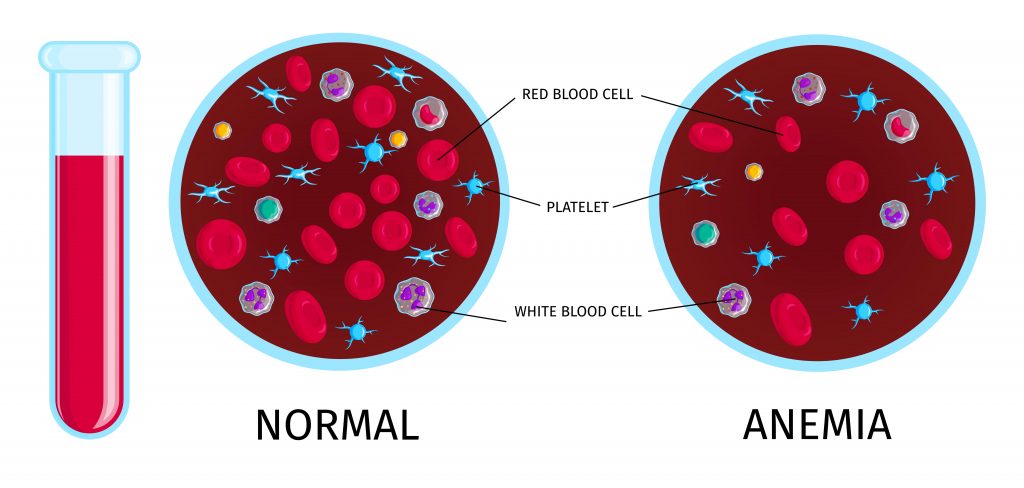5th floor, Lakshmi Sharada Arcade,
6th Main Road, No 251,
17th Cross Road,Sector 7,
HSR Layout,Bangalore,
Karnataka-560102

Our body contains an average of 5-6 liters of blood. Scientists estimate that the volume of blood in a human body should be approximately 7 percent of the body weight. Blood is composed of more than 4,000 different kinds of components out of which four of them are most important. Those are red blood cells, white blood cells, platelets, and plasma.
Iron Deficiency Anemia
There are different types of anemia among which iron deficiency anemia is the most common disorder of the blood which is affecting about a quarter of people globally, a moderate degree of iron deficiency anemia has affected approximately 610 million people and mild iron deficiency anemia has affected 375 million worldwide. It is slightly more common in females than males.
Who are at risk?
Anemia occurs when body lack red blood cells or red blood cells fail to perform properly. Women who are menstruating or pregnant are most at risk. As people grow older the risk goes higher, other than that a person with poor dietary habit is also at high risk.
If you are suffering from any disease mentioned below, it's better to take precautions to prevent anemia.
How do I know if I am Anemic?
The low level of hemoglobin in your blood indicates anemia. The normal hemoglobin range is generally defined as 13.5 - 17.5 g/dl of blood for men and 12.0 - 15.5 g/dl for women.
Anemia has greater symptoms which may include:
Weakness, Feeling tired, Increased thirst, Shortness of breath, Sore tongue, Poor ability to exercise, Dizziness and feeling like one is going to pass out, Lightheadedness upon standing, Fast or irregular heartbeat, Confusion, Headache, Cold hands or feet, Pale or yellow skin
Is Anemia Preventable?
Eating healthy and iron-rich foods can help you avoid both iron and vitamin B12 deficiency anemia, but not all types of anemia. To prevent iron deficiency anemia, the optimal thing you can do is to ensure you get sufficient iron in your diet, at times when your body requires extra iron, such as during pregnancy or breastfeeding, boost your iron intake even more with food and talk to your health care professional for iron supplements.
Foods to include in your diet:
Red Meat, Poultry, Seafood, Dark leafy greens like colocasia leaves, spinach, Beetroot, Egg yolks, Legumes, Oatmeal, Peanut butter, Apricots, Soybeans, Iron Fortified cereals, Dried fruits such as almonds, raisins, prunes, dates, nuts, figs, pistachio, Honey, Jaggery, Fruits like watermelon, pomegranate
Note:
Try to add high vitamin C to all iron rich foods as it enhances iron absorption
Daily multivitamin supplement can also help prevent nutritional anemia